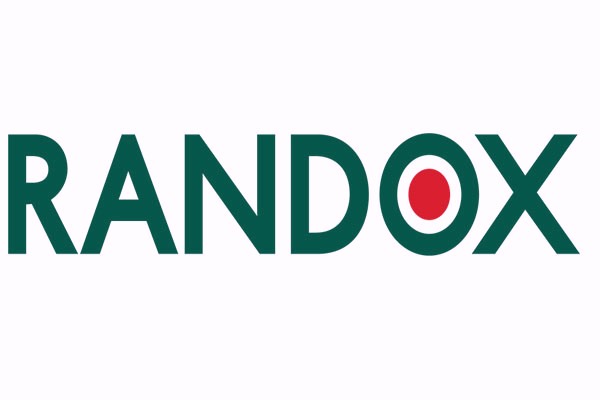
 Linearity is the ability to provide results that are directly proportional to the concentration of the analyte in the test sample. CLIA ’88 defines linearity sets as the assaying of materials of known concentrations in the same manner as patient samples to verify the instrument or test systems’ linearity throughout the reportable range for patient test results. Linearity testing assesses the systems’ calibration to verify it is still valid, tests if a method is linear across the full reportable range and supplements QC and PT by challenging a larger segment of the reportable range.
Linearity is the ability to provide results that are directly proportional to the concentration of the analyte in the test sample. CLIA ’88 defines linearity sets as the assaying of materials of known concentrations in the same manner as patient samples to verify the instrument or test systems’ linearity throughout the reportable range for patient test results. Linearity testing assesses the systems’ calibration to verify it is still valid, tests if a method is linear across the full reportable range and supplements QC and PT by challenging a larger segment of the reportable range.
According to CLIA, a laboratory should perform and document calibration verification procedures at least once every 6 months and/or whenever one of the following occur;

- A complete change of reagents for a procedure is introduced, unless the laboratory candemonstrate that changing reagent lot numbers does not affect the range.
- There is a major preventive maintenance or replacement of critical parts that may influence test performance.
- Control material reflects an unusual trend or shift, or are outside of the laboratory’s acceptable limits, and other means of assessing and correcting unacceptable control values fail to identify and correct the problem.
- Laboratory’s established schedule for verifying the reportable range for patient test results requires more frequent calibration verification.
- New instrument validation
They also recommend that a minimum of 3 levels are tested covering the low end, mid-point and high end of the reportable range however, CLSI and Westgard recommend at least 5 levels are tested.Laboratories should run at least 2 replicates (3 is considered best practise) of each level in the same way they would a patient or control sample. To assess the linearity of the test system the results obtained are plotted against the target values provided on the kit insert supplied with the product. If the result obtained is within the pre-established acceptance limits then performance is considered acceptable. The degree to which the plotted curve conforms to a straight line is a measure of system linearity.

Randox Calibration Verification

Our range of instrument dedicated, liquid calibration verifiers is designed to challenge the entire Analytical Measuring Range, whilst helping to meet CLIA requirements and remaining convenient to use.

Range of Linearity sets
- C-Reactive Protein (CRP) Linearity Verifiers
- High Sensitivity C-Reactive Protein (hsCRP) Linearity Verifier
- Esoterics Linearity Verifier
- Rheumatoid Factor (RF) Linearity Verifier
- Lipids Linearity Verifier
- Apolipoprotein A1 (Apo A1) & Apolipoprotein B (Apo B) Linearity Verifier
- Therapeutic Drug Monitoring (TDM) Linearity Verifier
- CO2 and Electrolytes Linearity Verifier
Benefits
Liquid Samples- All samples are provided in a user-friendly, liquid format significantly reducing preparation time and the risk of pipetting errors.
Clinically Relevant Levels – Specifically designed to challenge the complete Analytical Measuring Range (AMR), helping to ensure accurate and reliable instrument performance. A minimum of 5 levels eliminates the need for manual dilution and allows for more comprehensive assessment than the minimum requirement of 3 levels set by CLIA.
Instrument Dedicated – Help to ensure specific instrument requirements are met with the availability of dedicated solutions for Roche Cobas systems.
Stability – An extended open vial stability keeps waste to a minimum and ensures availability of product for troubleshooting.
Data Reduction Software – Complimentary data reduction software is provided delivering an immediate indication of performance.
Consolidation – Reduce costs, storage space and the number of individual products required to cover your test menu with our comprehensive, multi-analyte Calibration Verifiers.
 Data Reduction Software
Data Reduction Software
Complimentary data reduction software is available for use with all Randox calibration verification sets, delivering instant access to a wide range of functionality to make the data review process faster.
Providing instant access to automatically generated charts, statistics and real-time peer group data (a peer group refers to other laboratories using the same instrument and lot number), the Acusera Verify software is designed to significantly reduce the time spent analysing data, facilitating immediate laboratory decisions.
- Cloud based software allowing convenient access from anywhere in the lab
- Intuitive user-friendly interface with simple data entry functionality
- Easy-to-interpret, interactive charts for at-a-glance performance assessment
- Automatically generated statistics
- Peer group data updated live in real-time for faster troubleshooting
About Randox Quality Control
Laboratory Quality Control is our passion and with more than 30 years’ experience developing QC for the in vitro diagnostics market we believe in producing high quality material designed to streamline procedures, whilst reducing costs in laboratories of all sizes and budgets. These qualities have been reflected in our Acusera true third-party quality controls, Acusera 24•7 interlaboratory data management software and RIQAS EQA scheme.
Randox is one of the largest manufacturers of true third-party quality control solutions delivering reliable, high quality products designed to accurately assess instrument performance and ultimately provide confidence in patient test results. With more than 390 analytes available across the Acusera range and a wide range of formats providing flexibility & choice, we have a solution to suit you.
Be a part of Elets Collaborative Initiatives. Join Us for Upcoming Events and explore business opportunities. Like us on Facebook , connect with us on LinkedIn and follow us on Twitter , Instagram.
"Exciting news! Elets technomedia is now on WhatsApp Channels Subscribe today by clicking the link and stay updated with the latest insights!" Click here!
















